Bufflehead (Bucephala albeola) deserve thousands of words, but Species Saturday is supposed to be short.
Bufflehead might’ve dethroned Northern Pintail (Anas acuta) for my “favorite duck.”
Bucephala albeola is a cavity nester. So are Wood Duck (Aix sponsa), Hooded Merganser (Lophodytes cucullatus), Common Goldeneye (Bucephala clangula), and other species.
Bufflehead prefer to nest in cavities of Northern Flicker (Colaptes auratus), and do so “almost exclusively.”
They are small enough to use a flicker’s cavity without having to modify it.
Aquarium of the Pacific says Bufflehead “can take flight almost directly from the water without having to run across its surface to build up enough speed to take off.”
They don’t have to, that doesn’t mean they never do. It makes a nice little path of splashes. These tiny ducks “achieve flight speeds of up to 77 kph (48 mph).” Not quite Mergus serrator’s 100 mph or a Canvasback’s (Aythya valisineria) 70, but for a tiny duck 48 is fast.
Bufflehead “dive often, ‘reappearing some distance away, bobbing to the surface like a little black-and-white cork.’”
Missouri Department of Conservation explains a Bufflehead’s dive. They “compress their feathers to squeeze out air, then plunge slightly forward and deeply under. With wings tight against their bodies, they propel forward with their feet. Dives last from 12 to 25 seconds before bobbing back to surface.”
The name “Bufflehead” comes from “buffalo-head,” because of their puffiness.
The Cornell Lab points out: “Unlike most ducks, the Bufflehead is mostly monogamous, often remaining with the same mate for several years.” Adorable, faithful, lively little ducks.
What’s not to love?






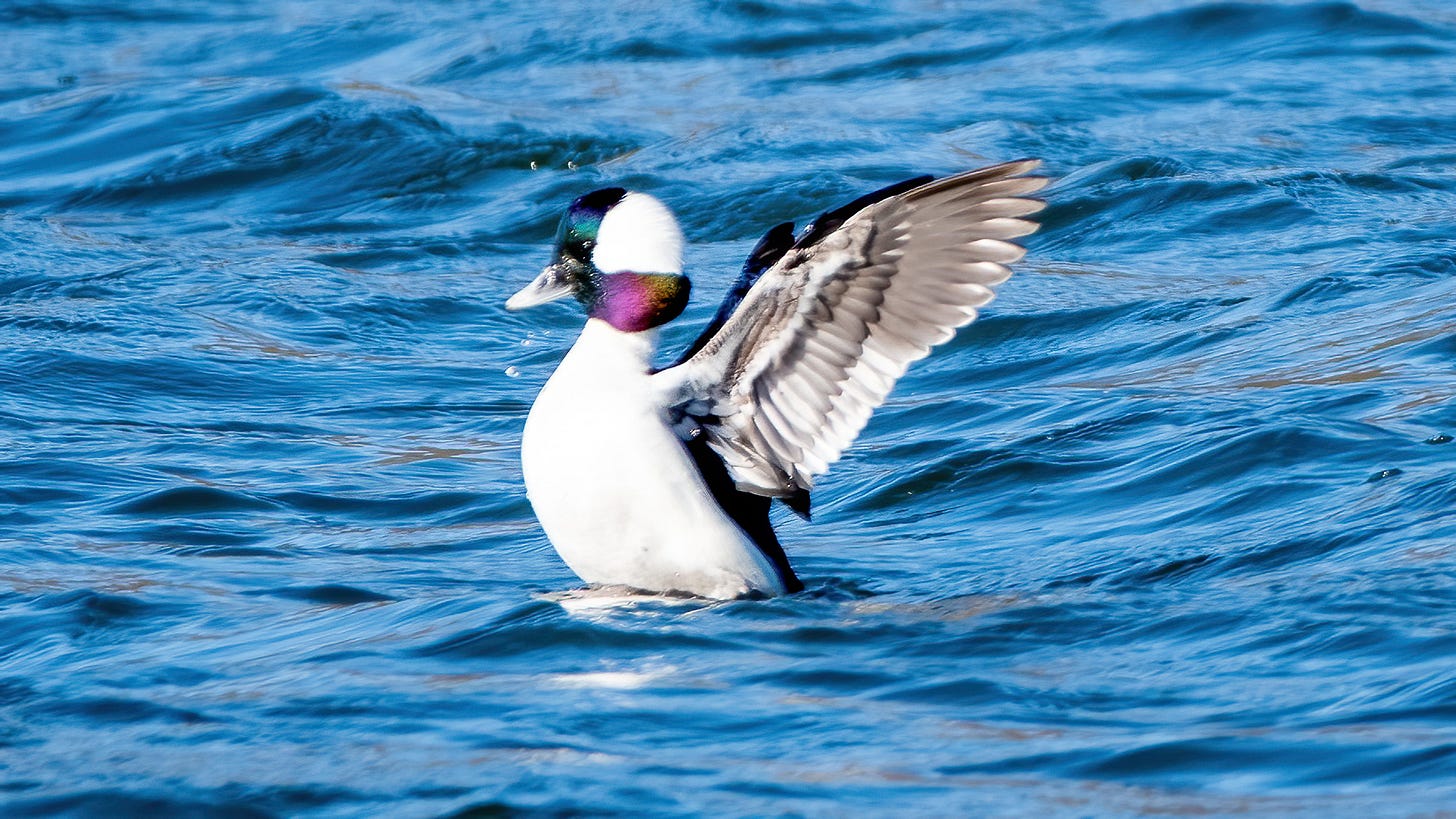
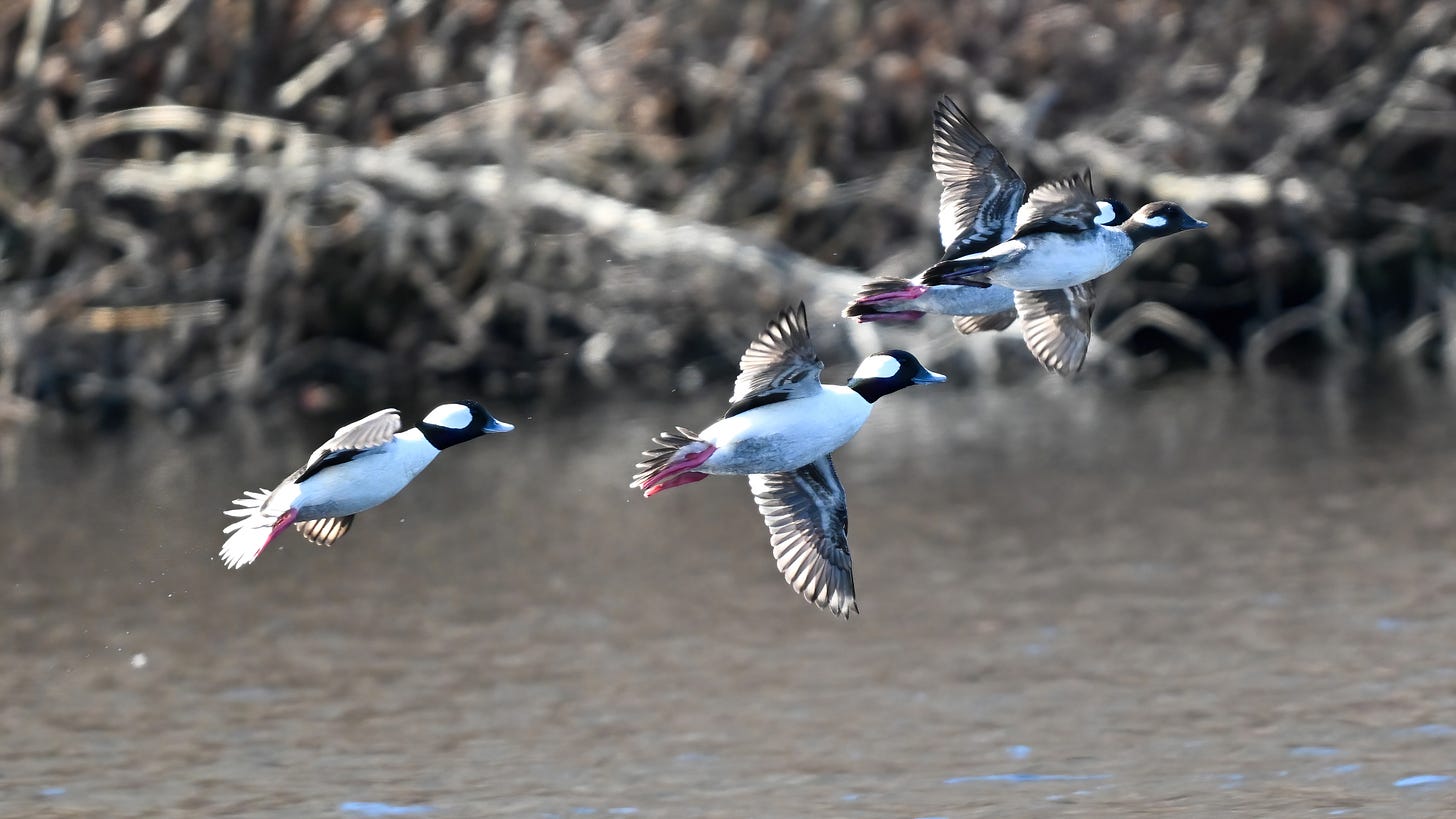
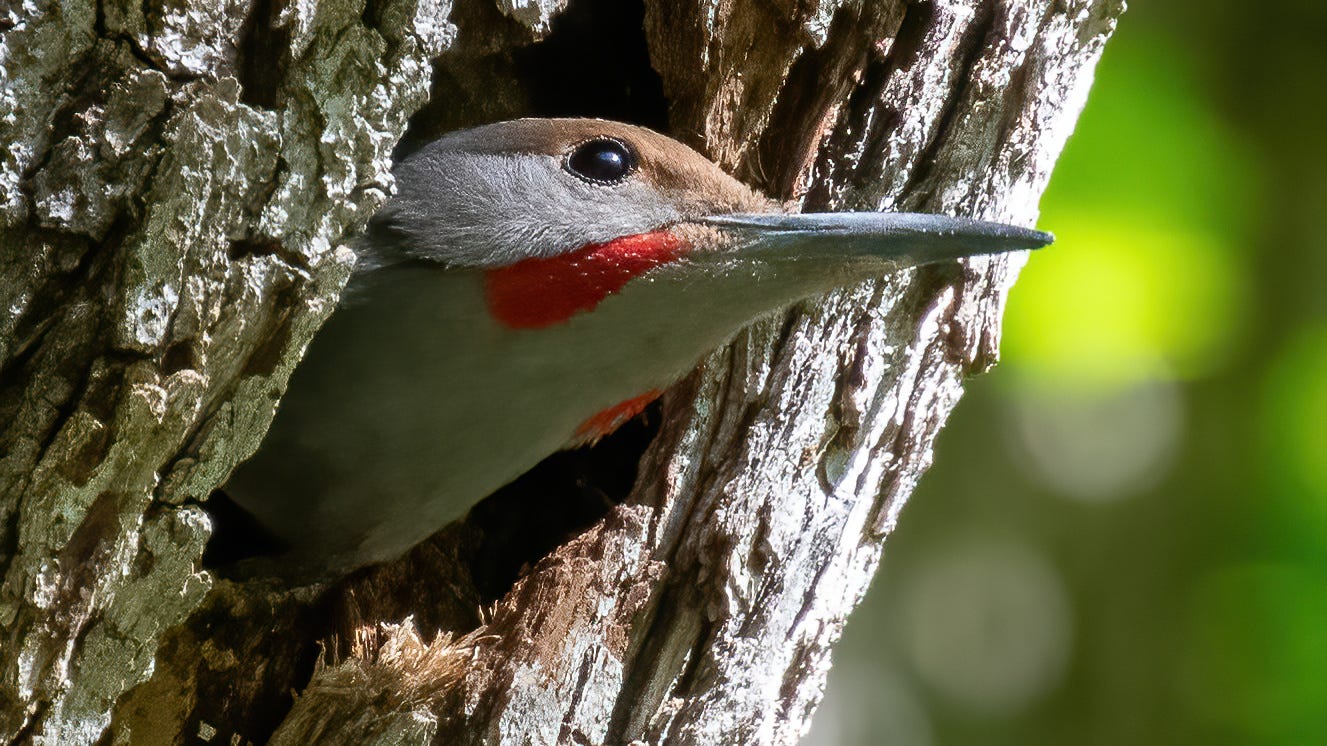


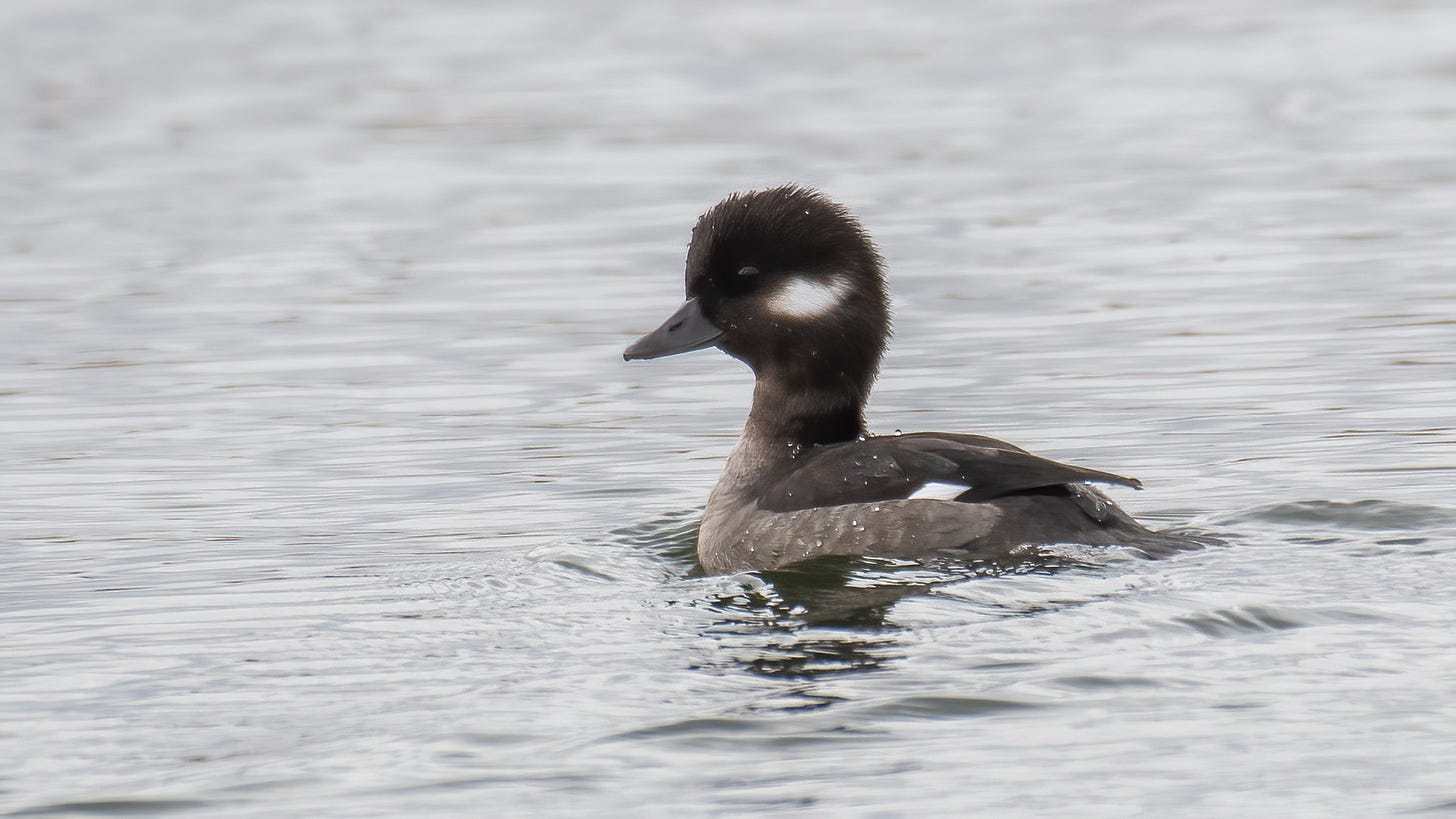
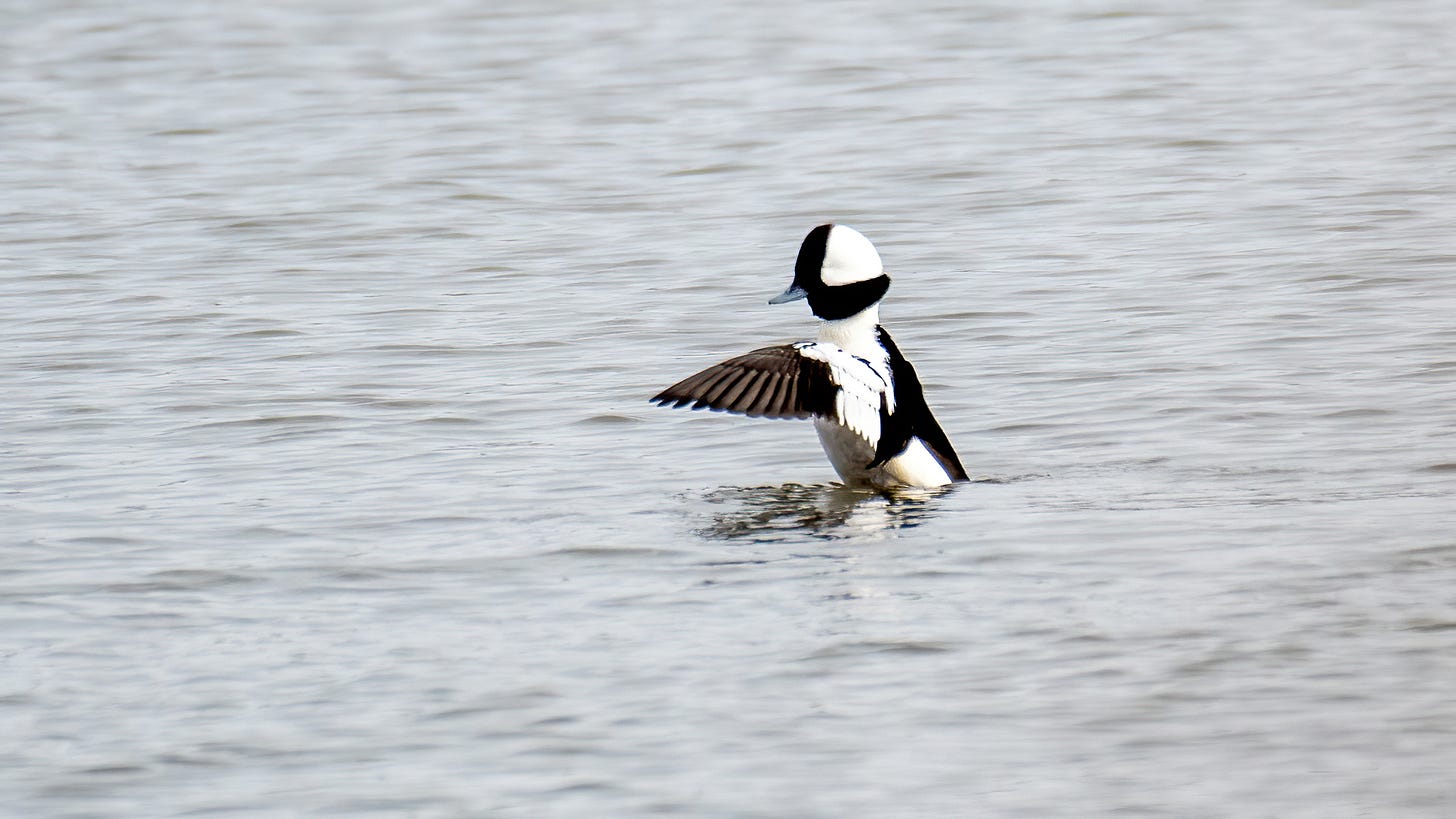
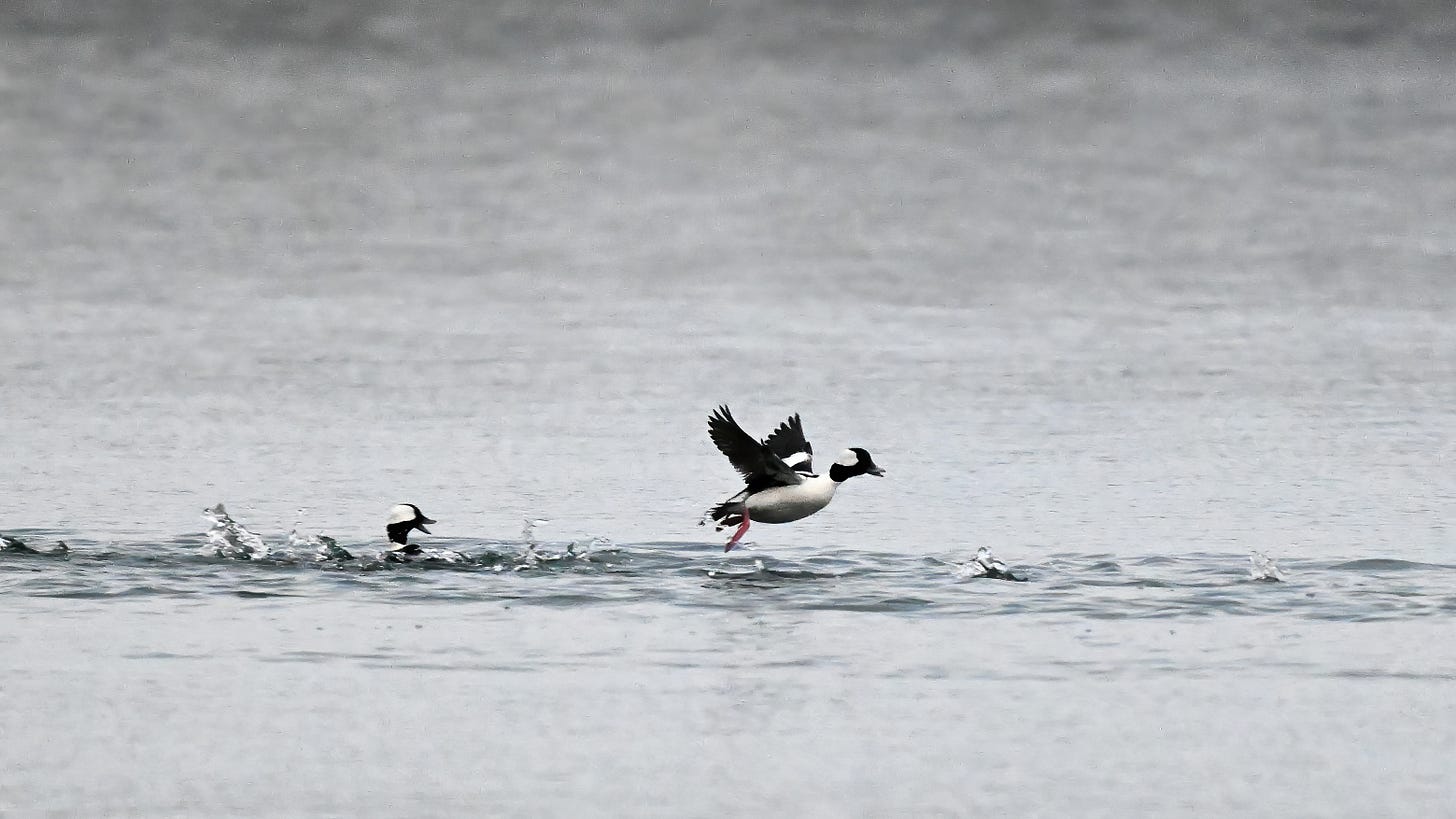
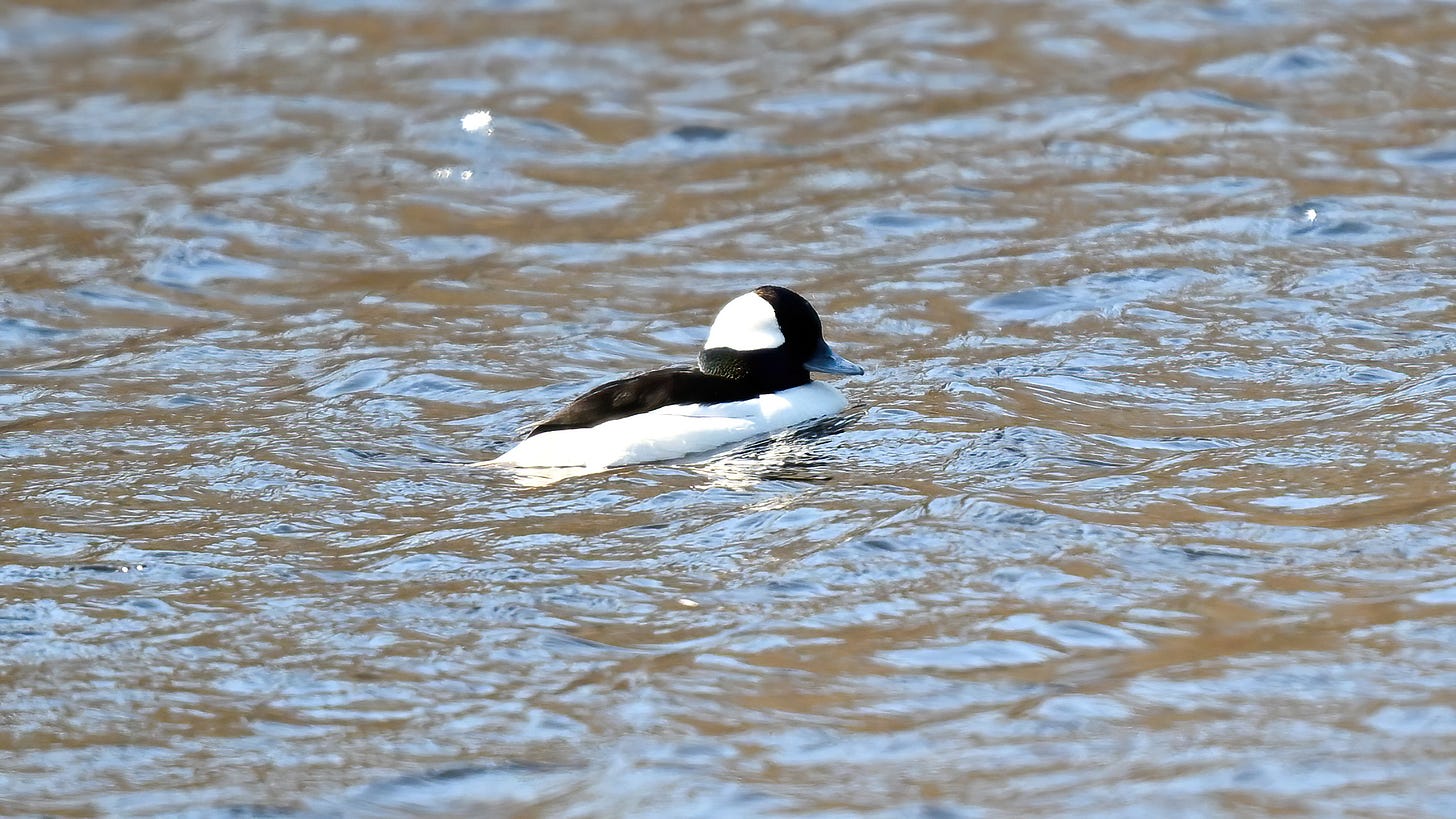

Thank you for the beautiful photos and interesting facts about one of my favorite ducks (it's hard to choose just one). Watching waterfowl on our pond in spring restores my sanity in this time of chaos and uncertainty.
In Massachusetts, old-timers called buffleheads, butterballs.